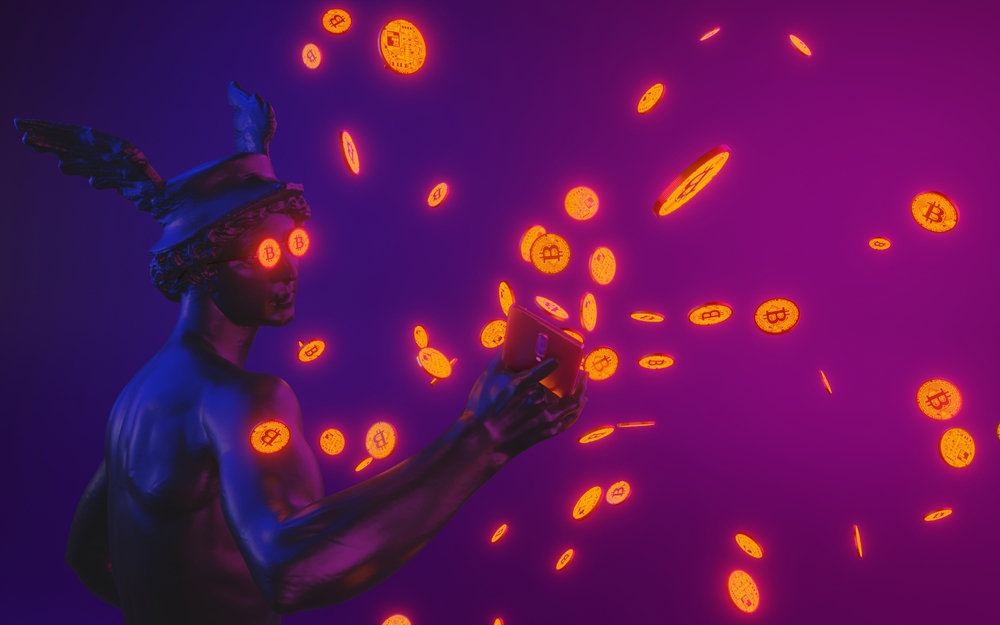
Adding blockchain technology to the art world is causing a shift that will change everything. Traditional art and cutting-edge blockchain solutions have come together to form a new type of art called “crypto art.” This new way of making, selling, and having art is changing the art world by challenging old ideas about ownership and provenance and making art more accessible to everyone.
A Guide to Crypto Art:
Crypto art is any digital or real art that is encrypted and verified on a blockchain, usually with non-fungible coins (NFTs). Not-for-sale (NFTs) are one-of-a-kind digital coins that can be used to buy things, like art in this case. Artists can prove titles and create scarcity by using blockchain technology. This solves problems that have been around for a long time in the art world, like fakes and a lack of openness.
Important Parts of Crypto Art:

Non-Fungible Tokens (NFTs):
Non-fungible tokens (NFTs) are at the heart of the crypto art trend. They are a completely new way to think about digital assets. One thing that makes NFTs special is that each token and the work of art or material it represents are instantly recognisable as unique. This trait comes from the fact that NFTs can’t be split or divided. This makes sure that each digital or physical work of art is unique and real.
As a way to change the creative world, artists have used the power of NFTs. Artists give their digital or physical products a sense of scarcity and provenance by linking them to tokens that can’t be exchanged for cash. NFTs are like digital proof of authenticity that can be used to find out where art came from and who owns it safely and openly within the blockchain. In addition to protecting the integrity of the artist’s work, this creates a new way to recognise and praise how unique each piece is in the vast digital world.
NFTs have changed the way things are done by connecting the old world of art with the new, quickly changing digital world. Artists can change the way we think about ownership, scarcity, and where something comes from by making and using non-fungible tokens. This happens at the exciting intersection of technology and art.
Smart Contracts:
Smart contracts are very important to the crypto art ecosystem. They are dynamic tools that automate many chores and change how transactions are carried out. Smart contracts are agreements that are written straight into computer code and run themselves on the blockchain. This new method brings speed and openness to the crypto art space, making things run more smoothly.
Royalties are one interesting way that smart contracts are used in the world of cryptography. By putting certain terms into the code, artists can make sure that they get a set amount of money when their work is sold again. This system not only gives artists a steady way to make money, but it also solves the problems of selling value and intellectual property rights.
Using smart contracts in crypto art is a great example of how imagination and technology can work together. With these automated deals, artists can better control and stay safe as they work their way through the complicated digital art market. Adding profits through smart contracts not only makes the relationship between artists and buyers fairer but also creates a decentralised and self-executing framework that changes how ownership and payment work in the constantly changing world of crypto art.
Decentralised Platforms:
Crypto art is often bought and sold on decentralised platforms designed to work with blockchain networks, such as Ethereum. OpenSea, Rarible, and Mintable are just a few of the platforms that let artists mint, list, and sell their digital goods straight to collectors.
Advantages of Crypto Art:

Immutable Ownership:
Blockchain makes sure that records of who owns something can’t be changed. Once a piece of art is tokenized, the history of who owns it is safely saved on the blockchain. This lowers the risk of fraud and makes the history of the art clear.
Royalties and Resale Rights:
Smart contracts let artists get royalties every time their work is sold again, giving them a steady stream of income. This function gives artists more power and makes sure they get paid when the secondary market value of their work goes up.
Accessibility around the world:
Through the use of blockchain technology, artists can communicate with people from all over the world without being constrained by the rules that govern the conventional art market. Crypto art makes the art world more open and diverse by letting anyone with an internet connection find, buy, and gather it.
Challenges and Criticisms:
Environmental Concerns:
Blockchain networks, especially those that use proof-of-work consensus mechanisms, use a lot of energy, which has caused environmental issues. Some artists and platforms are looking for eco-friendly options right now.
Overcrowding of the Market:
The crypto art market has grown very quickly, which has made people worry about market overcrowding and the loss of value. People who collect art may find it hard to sort through all the different pieces and find real works of art.
Conclusion:
When art and blockchain technology come together, they form a revolutionary force that changes how we make, buy, and enjoy art. Crypto art changes everything about the art world by giving artists access to new levels of transparency, ownership, and financial possibilities. As the movement grows, it will probably lead to more new ideas that will challenge the status quo and make it easier for artists to express themselves in the digital age.


